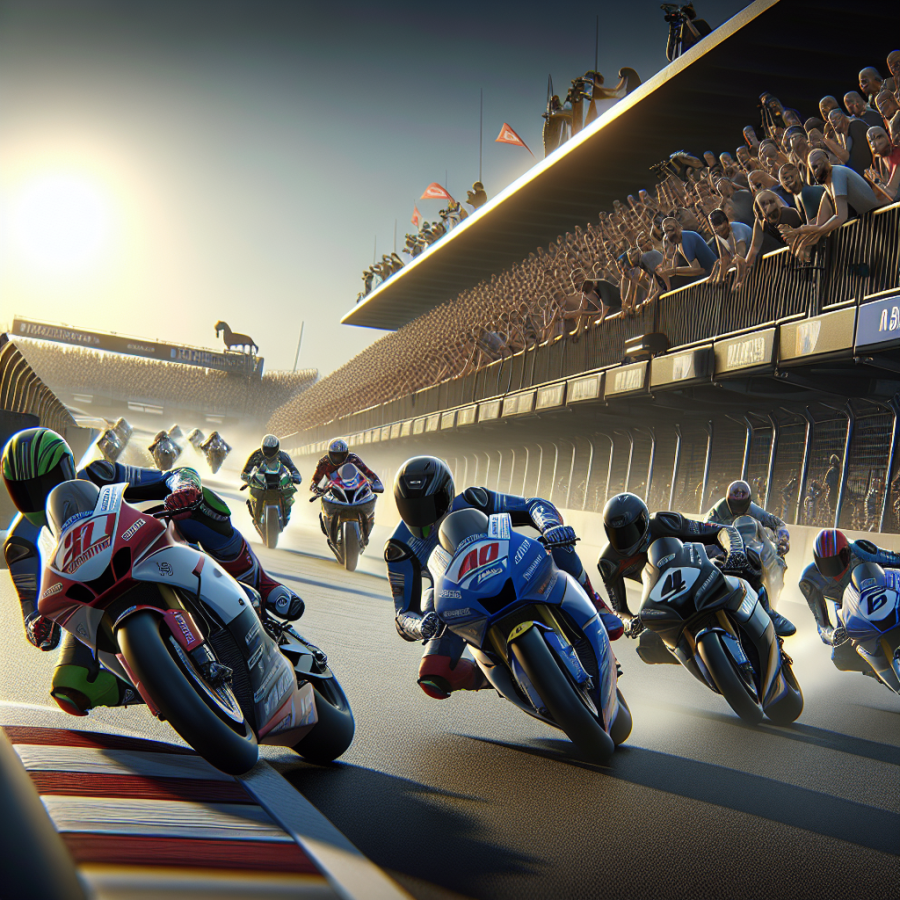The Adrenaline-Fueled World of Supersport Competition
In the high-speed, high-stakes world of supersport racing, adrenaline is as much a component of the sport as the motorcycles themselves. This unique form of competition pits rider against rider on some of the most technologically advanced two-wheeled machines in existence. Their finely-tuned engines scream as they hurtle down straightaways and carve through tight corners, showcasing both the incredible capabilities of the machines and the fearless skill of the riders.
Supersport racing is the ultimate test of precision and speed, where motorcycles that resemble those found in showrooms race at breakneck speeds. The category is established for middleweight performance bikes, typically of 600 to 750 cubic centimeters. These bikes are closely related to the road-going models, which adds to the relatability and popularity of the sport. Fans appreciate seeing motorcycles that look like their own pushed to their absolute limits, imagining themselves on the racetrack with their personal heroes.
The engineering feats involved in crafting a competitive supersport machine are second to none. The teams spend countless hours and sizable fortunes perfecting every aspect of the bike, from its aerodynamic bodywork to the peak performance of its engine. Electronics play a significant role: sophisticated traction control systems, anti-wheelie features, and data analysis tools give riders the data and control they need to maximize their speed while maintaining the bike's stability.
Riders competing in supersport races must have extraordinary physical fitness and mental tenacity. They push their limits at every twist and turn, knowing that any mistake could be costly. The tight competition requires them to make split-second decisions while maintaining precision control over their bikes, often traveling at speeds upwards of 150 mph. The physical demands are also intense, as riders must battle the forces of acceleration and deceleration, all while maneuvering their bike and maintaining an acute awareness of their competitors.
Safety is paramount in the world of supersport racing. While the thrill of high speeds is a major draw, organizing bodies like the Fédération Internationale de Motocyclisme (FIM) and regional equivalents ensure strict safety standards are enforced. Circuit designs, protective gear, and advanced medical facilities on-site at all major races contribute to preserving the well-being of the riders, allowing them to compete at the edge of their abilities with a modicum of risk management.
The race format typically includes practice sessions, qualifying rounds, and the race itself, spread over several days.
Read also:
Ace Your View: Ultimate Guide to Streaming Tennis Channel
Pushing the Limits: Engineering and Tactics in High-Speed Racing
Racing enthusiasts and engineers alike have always been driven by the allure of speed. High-speed racing, being the ultimate expression of this passion, is continuously evolving, always stretching the boundaries of what is technically possible. It is a domain where cutting-edge engineering and strategic racing tactics come together to create an exhilarating spectacle that thrills audiences worldwide.
At the very heart of high-speed racing is the engineering prowess that gives these machines their incredible performance. Engineers are constantly striving to enhance elements like aerodynamics, power-to-weight ratio, and thermal efficiency. Innovative materials such as carbon fiber composites and titanium alloys have revolutionized chassis and engine design, enabling vehicles to be lighter, stronger, and more agile than ever before.
Aerodynamics plays a pivotal role in the design of high-speed race cars. Teams invest heavily in wind tunnel testing and computational fluid dynamics simulations to sculpt bodywork that minimizes drag while maximizing downforce. This delicate balance ensures the car remains glued to the track while slicing through the air with minimal resistance. Active aerodynamic components, like adjustable rear wings and ducts that manipulate airflow, provide drivers with the ability to adapt to changing conditions and optimize performance lap by lap.
In the engine bay, the quest for more horsepower has never ceased. Turbocharged and hybrid power units push the envelope of power delivery while adhering to strict regulations that aim to level the playing field and promote sustainability. Advanced fuel management systems and regenerative braking are now commonplace, harnessing every ounce of energy in the most efficient ways possible.
High-speed racing is not just a test of engineering brilliance; it's also a chess game played at breakneck speeds where strategy and tactics can be the difference between victory and defeat. Teams must make real-time decisions based on tire wear, fuel loads, and the ever-changing conditions on the track. Choosing the right moment to pit for fresh tires or to adjust strategies based on rivals' moves could capitalize on a fleeting opportunity to take the lead.
Drivers must also possess the tactical acumen to navigate the intricacies of the race. Overtaking maneuvers, slipstreaming behind competitors to reduce drag, and defending positions without compromising speed are skills honed through intense practice and experience.
The coordination between the pit crew and the race engineer is another critical aspect. Pit stops need to be meticulously planned and executed with precision. A fraction of a second lost during a tire change can translate into a significant disadvantage on the track.




